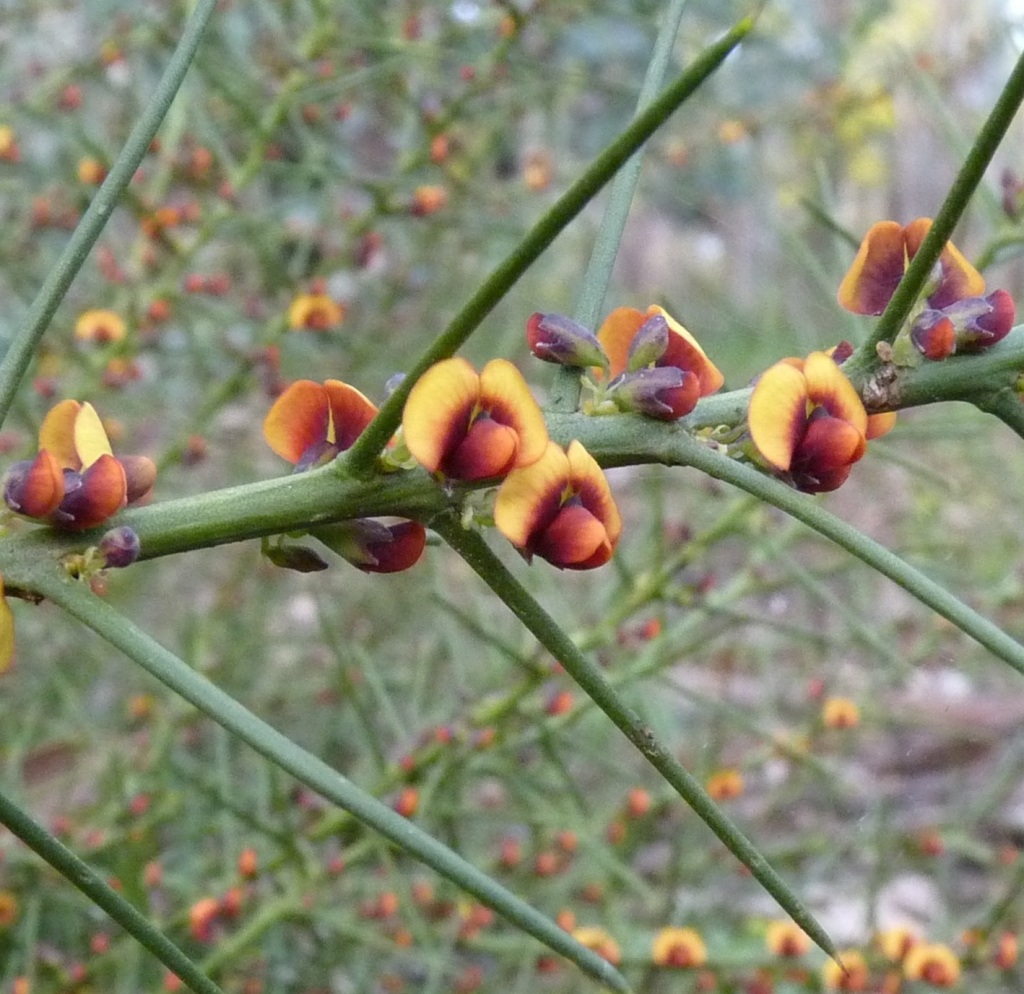Daviesia genistifolia
A.Cunn. ex Benth. Broom Bitter-peaLow multistemmed or slender shrub to 2 m tall; branches glabrous, grooved; branchlets terete. Phyllodes terete or vertically compressed, 5–30 mm long, 0.5–1.25 mm wide, spreading to slightly ascending, green, striate, rigid, pungent, articulate on branchlet. Inflorescences 1-few per axil, racemose, mostly 2–6-flowered, rachis 1.5–8 mm long; peduncle 0.5–1.5 mm long; pedicels to c. 2.5 mm long, subtended by an ovate to spathulate, concave, recurved bract c. 1 mm long. Calyx 3–4 mm long including 0.5–1 mm receptacle, teeth short, apiculate, slightly fimbriate, upper 2 partly united; corolla mostly yellow or orange; standard suborbicular, 6–8 mm long, 6–8 mm wide, yellow or orange with a crimson centre. Pod broad triangular, 8–11 mm long, 4–8 mm wide; seed usually 1, oblong-reniform, c. 4 mm long, compressed. Flowers Aug.–Oct.
LoM, MuM, Wim, VRiv, Gold, CVU, GGr, NIS. Scattered across northern Victoria from the South Australian border to near Wangaratta (e.g. Dimboola, Wedderburn, Nagambie and Chiltern areas) but rare. Found in dry sclerophyll forests.
Old, unvouchered records of this species may include D. devito and D. schwarzenegger which had been previously included in D. genistifolia (as in, e.g. Willis 1973) or D. benthamii (e.g. Jeanes 1996). The latter species is now regarded as being a WA endemic.. The mapped distribution of D. genistifolia probably exaggerates its natural range in Victoria.
 Spinning
SpinningJeanes, J.A. (1996). Fabaceae. In: Walsh, N.G.; Entwisle, T.J., Flora of Victoria Vol. 3, Dicotyledons Winteraceae to Myrtaceae, pp. 663–829. Inkata Press, Melbourne.
Willis, J.H. (1973). A handbook to plants in Victoria. Melbourne University Press, Carlton.


